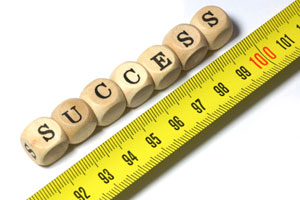 Want to know about getting a jump start on lifestyle changes that commonly begin after the New Year? Here are a few reader question favorites from “Ask Mary Q+As” about planning for change.
Want to know about getting a jump start on lifestyle changes that commonly begin after the New Year? Here are a few reader question favorites from “Ask Mary Q+As” about planning for change.
Ask Mary: Where should I start with my healthy lifestyle change?
Start with changing one thing and add others over time. It’s always best to practice the change that brings you the most joy. To find the parts of your diet in need of change, keep a food log for 3 to 7 days – before changing the way you eat. Do you snack between meals, frequently eat in restaurants, or neglect to eat at least 5 fruits or vegetables a day? Would you like to give up soda or might you prefer to slowdown your eating? Each change is noble and should be greeted as an adventure. Once you decide upon a change to make, set a S-M-A-R-T goal that is Specific, Measurable, Attainable, Realistic, and Timely. For instance, instead of saying, “I’m going to exercise”, get S-M-A-R-T. Say, “I will walk for 20 minutes at lunchtime Monday through Thursday”. Then envision yourself easily reaching your goal and you’re part way there!
Ask Mary: How can I get motivated to change?
If you are just thinking about changing, then read articles about people who have successfully changed and interview role models to emulate. Do a self-appraisal to become aware of what you have to change, and then visualize an approach that appeals to you. Envision how you will exercise separately from how you will eat. Break it down into small steps you can take throughout the day. But if you have finished thinking and are preparing to change, you might set a start-date, or write a plan of action, or commit to your intentions publicly. It also helps to find a partner on Calorie Count’s community forums and specialty groups. Give yourself permission to take change slowly because premature action usually doesn’t work out.
Ask Mary: What body measurements should I take at the start of a weight loss program?
Start with your weight on the scale and a good “before” photo and then, while wearing tight clothing or none at all, measure your waist circumference about a half-inch above the belly button as well as the bust around the chest right at the nipple line, the chest just under the bust, the hips and thighs around the biggest part, and the upper arm around the largest part above your elbow. Do not pull the tape measure too tight and be sure to record the results immediately. Update your measurements about once a month and record the results right away. It’s also a good idea to assess for body composition (fat-to-muscle ratio), although it’s not as easy. For low cost and practicality, nothing beats Skinfold Measurements by someone who is trained to use the calipers and interpret the results. The service is sometimes offered at the gym. Bioelectrical impedance scales are popular – but often inaccurate. The readings are under the influence of hydration, water retention, food intake, skin temperature, age, and other factors. To increase the reliability (but not the accuracy), use the scale under similar conditions.
ALSO READ:
35 Kid-Friendly Snacks That Meet the Smart Guidelines
The Best of 2024 – Foodies, Selfies, Fitness, Body Image, Books, and More!
